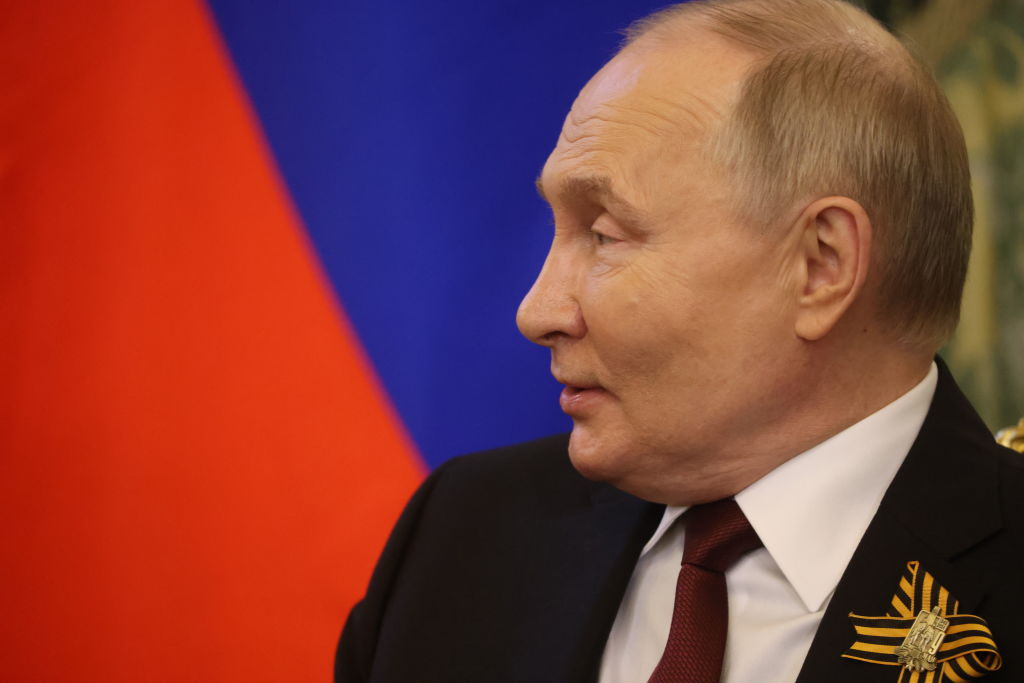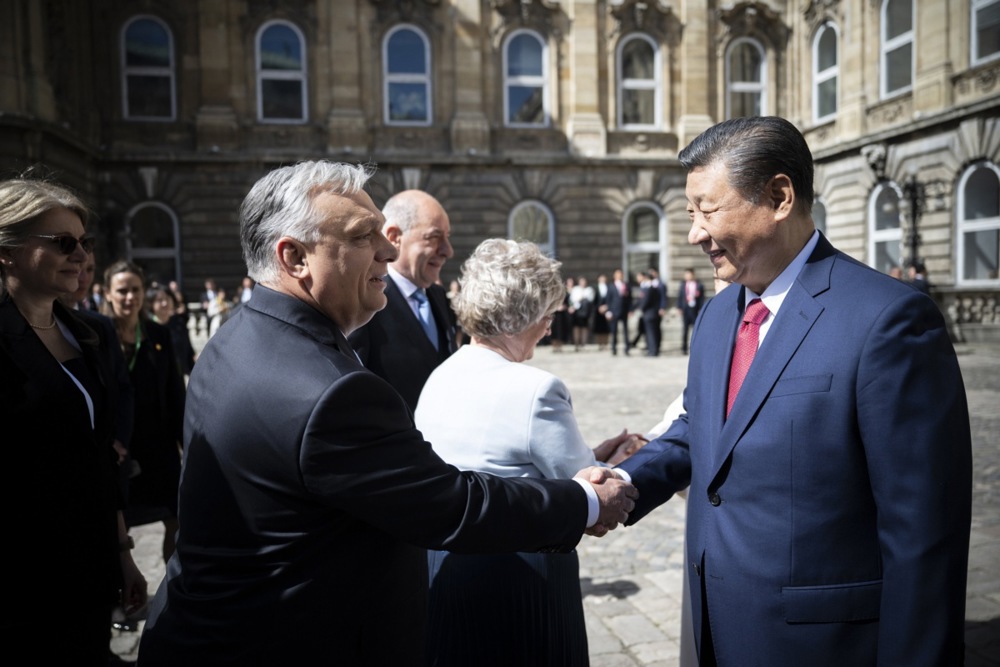“War is Hell”, William Tecumseh Sherman said in 1879, looking back on his years campaigning against the Confederacy during America’s Civil War. Sherman, that most notorious of Union generals, already knew in the second half of the 19th century just how much brutality and effort it takes to subdue a peer enemy in the industrial age.
His famed 1864 scorched-earth-style “March to the Sea,” reminiscent of medieval chevauchées, cut a large swathe of sheer destruction through Georgia on the way to the port city of Savannah. It dealt a major (some say critical) blow to the Confederate economy, logistics and war-making potential, quite apart from its significance in strictly military-operational terms.
Sherman’s forces devastated all infrastructure (civilian and military) in its path, transport networks, industrial facilities, and pretty much anything else with economic value that was possible to burn or blow up.
It is the unrelenting pursuit of destruction of everything that is in reach of one’s military power – rather than just focusing on the enemy’s field forces or strongholds – that unites, across time, the Black Prince’s mounted raid through Gascony in 1355 during the Hundred Years’ War, with Wallenstein’s Silesian campaign in 1627 during the Thirty Years’ War, or with the strategic bombing of Germany in the Second World War.
Sherman’s Savannah Campaign sits well within this military tradition. Historians see in the “March to the Sea” a precursor of what in the next century was called Total War, and which culminated with the greatest single twin-act of destruction ever performed by man: the nuclear bombing of Hiroshima and Nagasaki in August 1945.
In short, physical and comprehensive devastation of the opponent’s territory, of the kind now attempted by Russia in Ukraine for example, is not new – and, as the record shows, unfortunately it works.
Quite apart from ensuring the military conditions for it – i.e. rendering the enemy helpless in protecting his own lands and cities – the main problem is having the material capacity to enact destruction to the degree and in the timeframe required. It takes significant amounts of explosives and, if done remotely (e.g. through air, sea or land bombardment), of ordinance, to level built-up environments and infrastructures.
During the Crimean War, for example, the Royal Engineers spent months blowing up the Russian naval base and dockyard complex after the fall of Sevastopol to Anglo-French forces in 1855. And the Russians themselves spent several months pulverising Grozny in the Second Chechen War at the turn of the 21st century, to the point where the UN declared it “the most destroyed city on earth”.
So, apart from being hell, war is also hard – and modern war is even harder, for both material and “strategic” reasons. The fundamental problem is scale. The amount of material resources of all kinds – at home and at the front – required to wage major military operations, the number of people involved, the vast geographic size and complexity of the battlespace in large-scale campaigns: all these function at a scale so outside normal human and societal experience that they are extremely hard to comprehend.
Thus important errors of judgement are born at all levels, but especially at that of strategy, even among professionals in the field. This even precedes strategy-making, as the misunderstanding of scale in the conduct of war and its short- and long-term implications, is built directly into early expectations and assumptions about the factors at play.
Hence why most industrial-era wars quickly turn into something very different from what was initially thought: you run out of “stuff” (ammunition, men, and especially time) much sooner than planned.
One consequence of all this in a modern context is that the all-important systematic destruction of the enemy’s capacity to make war is very hard to achieve from a practical, material standpoint. If the “knock-out blow” and the “swift victory” that strategists always expect are not achieved in the early stages of a modern conventional conflict through manoeuvre warfare, the highly industrialised nature of our globalised world all but guarantees that the war will devolve into an attritional nightmare.
But the “blitzkrieg”-style promise of manoeuvre warfare – certainly between relatively well matched adversaries – has been an increasingly tenuous proposition in the space and information age. The Ukraine war appears to have settled the case for the foreseeable future: the battlefield is too “transparent” to remote surveillance, and targets are too vulnerable to immediate long-range precision strikes, for mass attack formations to be viable anymore.
But without mass there can hardly be any deep breakthrough; the enemy’s collapse is only likely to come as a result of attrition and piecemeal destruction of his war-making capacity rather than manoeuvre.
The other side of the high-intensity warfare coin is the way that we fight campaigns against non-state adversaries in the modern, or rather post-modern, era. Whereas in conventional warfare destruction is attempted but is hard for practical reasons, in unconventional warfare against insurgents or terrorists destruction would be comparatively easy in practice (the enemy can’t defend one-to-one, symmetrically) but is not tried properly.
The modern Western excuse for the failure to unleash maximum destruction against sub-state or insurgent forces is, of course, the need to comply with international law and so-called “human rights.”
This is the single most important factor that accounts for the string of Western failures in places like Iraq and Afghanistan where COIN (counter-insurgency warfare) tactics were preferred to the time-honoured way of defeating such adversaries, i.e. extreme violence.
This is simply stating a fact. Throughout history, from the time of Alexander to the present days of Putin, the winning method for dealing with insurgencies and guerrillas has been the same: destruction and bloody reprisals against, on as large a scale as possible, to terrorise the terrorists and their support base.
Unlike Western countries, the Russians still retain this approach and mindset, because it works.
They proved it in Chechnya, a land of uniquely fierce warriors, whom Putin nonetheless subdued precisely by using large-scale devastation tactics. Chechnya was not only pacified in record time (all things considered…), but the Chechens are now fighting and dying for their former Russian enemies, in Ukraine.
An even more recent example is Syria, where Assad – with Russian help – also pursued an unrelenting strategy of destruction against rebel-held areas (including cities like Aleppo), which was morally repugnant but militarily successful.
The question of destruction, in all of its implacable grimness, is central to winning wars. In the modern age there is hardly any way around it, since Blitzkrieg-type victories are no longer possible.
Wars turn into long, hard slogs that, in a globalised world, become ever more complex through foreign interference over time. This is, fundamentally, why no one “wins” decisively anymore, i.e. through the other side’s clear surrender.
Russia is struggling in Ukraine, and may never overthrow its adversary.
Israel is arguably not even at the halfway point in its Gaza campaign, after almost eight months of heavy fighting in a small strip of land.
The campaign against ISIS took half a decade until the Abu Bakr al-Baghdadi was killed and the terrorists’ last holdouts in Syria were wiped out – and the Islamist barbarian movement still lives.
We can go even further back in time, to the Iran-Iraq War in the 1980s or Vietnam in the 1970s; even the Korean War is only technically an armistice.
The exceptions, such as Israel’s victory in 1967, are few and far between, while campaigns such as the 1991 Gulf War or Libya 2011 – or even the Yom Kippur War – were never pushed towards their logical military end (and thus given the potential “opportunity” to fail in the same way as the others).
Recognising the pivotal role of destruction in war is not a counsel of despair as far as our present situation is concerned. This sword cuts both ways. In a war like that in Ukraine, the destruction imperative means that the Russians, willing though they are to devastate everything they possibly can, do face physical, practical limits to their capacity to do so.
As this reality sinks in and the difficulty to grind down large cities and territories across other countries becomes clearer, it may contribute to increased deterrence against further Russian aggression beyond Ukraine.
China will take note, too: sending an amphibious invasion force over the Taiwan Strait will be an even taller order, with very little, if any, chances of a swift victory.
There is therefore an optimistic case to be made that through the grinding war in Ukraine the old lessons of the dynamics of destruction are being re-learned, and that the structural difficulty of winning a modern conflict is being demonstrated anew in a slow, bloody process.
This should eventually convince leaders on all sides, by degrees, to turning towards negotiations as a way out of this mess. The only alternative is much more destruction, which requires nuclear weapons. And no one wants that.
Gabriel Elefteriu is deputy director at the Council on Geostrategy in London and a fellow at Yorktown Institute in Washington, D.C.






The welcome but feeble Yemen strikes show that half-measures don’t work anymore: The West needs to relearn how to act with overwhelming force